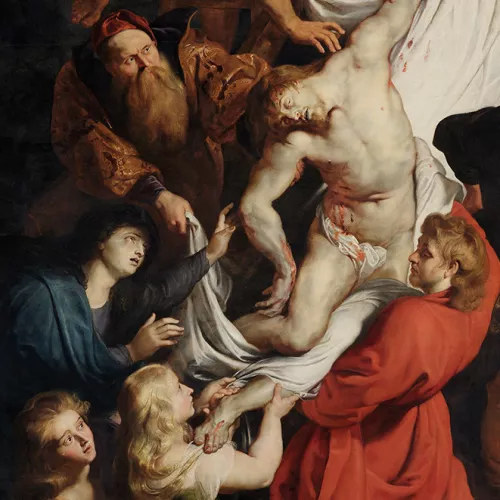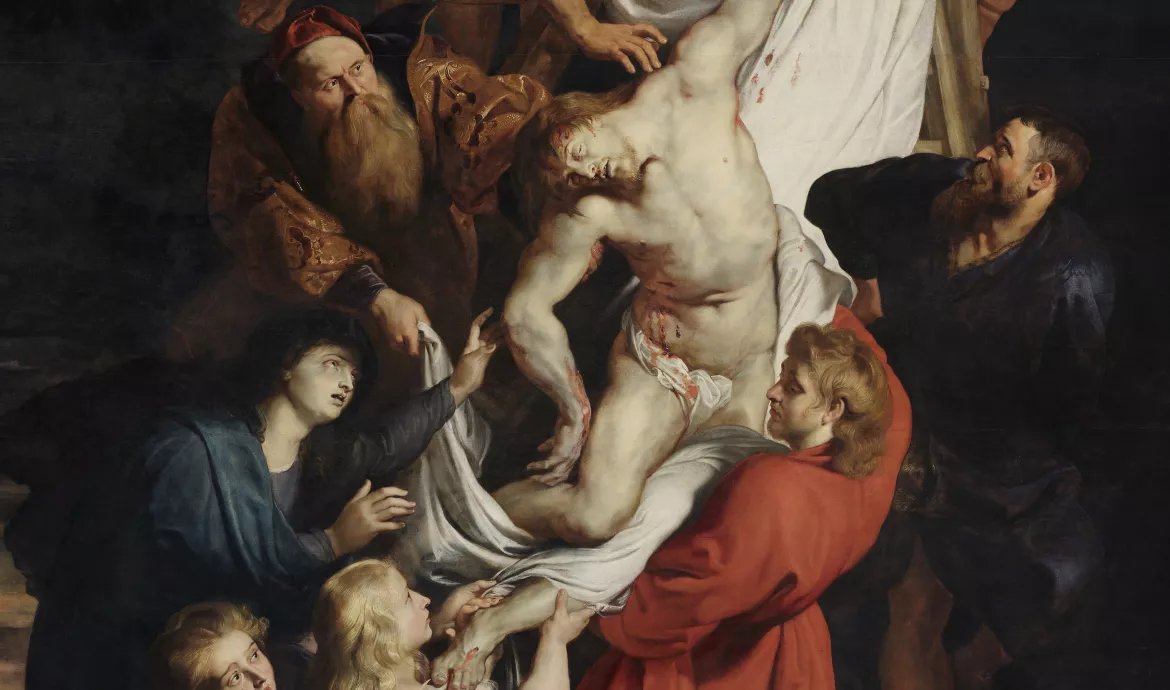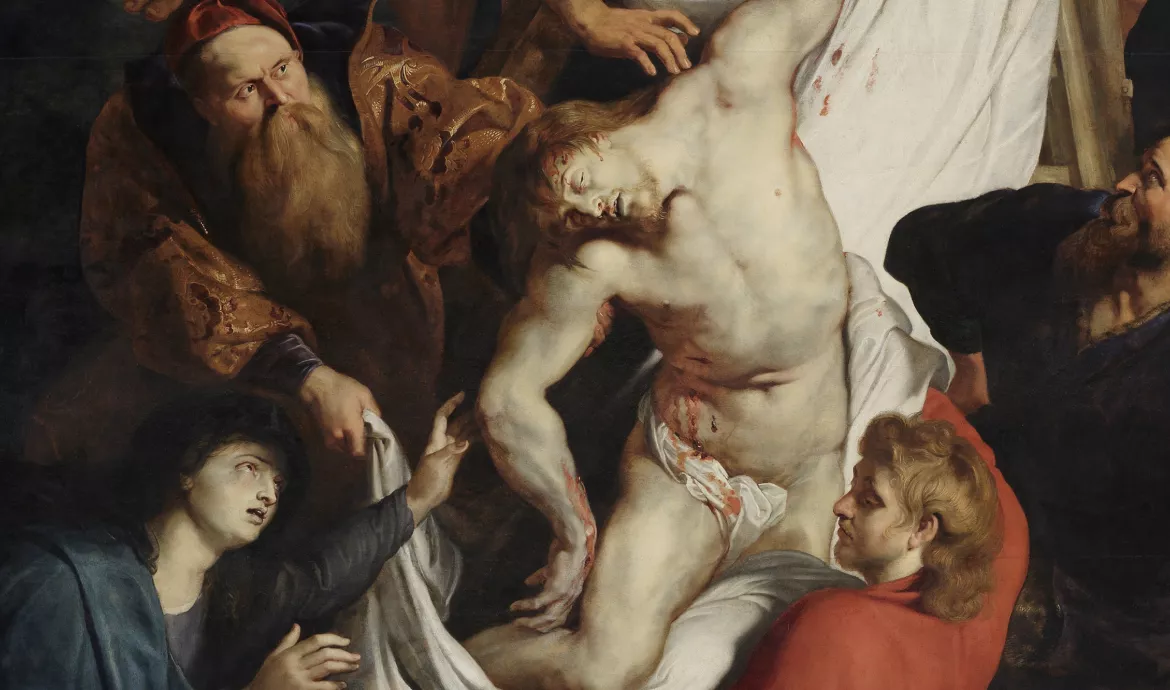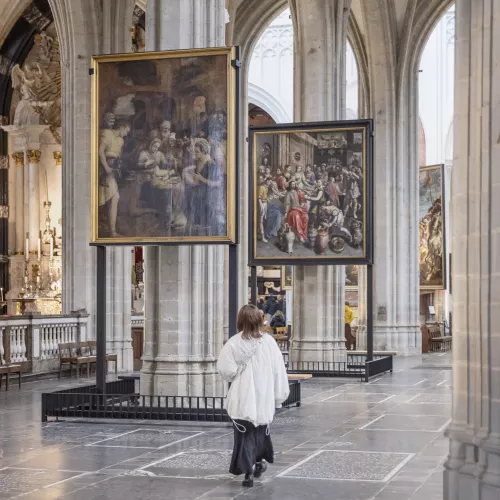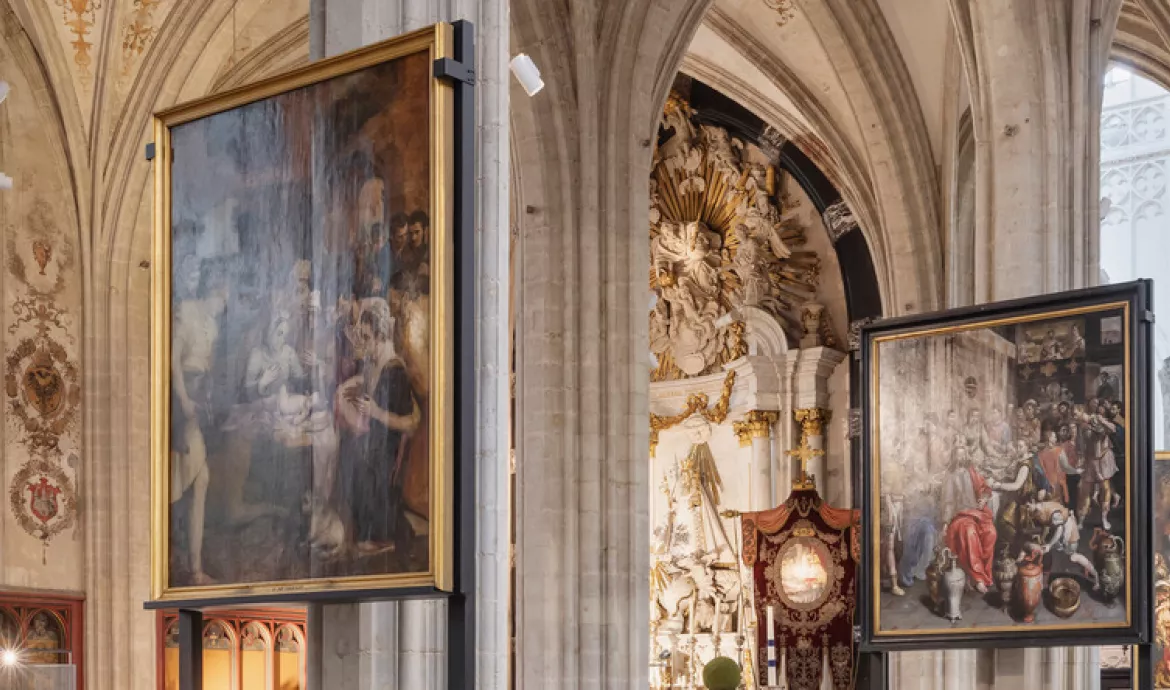On the left panel a pregnant Mary carries her Son in her womb. It is a time of need and expectation. The right panel transports us to Jerusalem. There Jesus’ parents carry out a Jewish ritual for children who are forty days old. Then something remarkable happens: an elderly man takes the child in his arms and calls him ‘the light of the world’. At the same time he proclaims how much sorrow his mother will have to endure. At that moment Mary had no idea what he meant. Thirty years later, the meaning of the old man’s words becomes clear. On the centre panel the Virgin Mary witnesses her son’s death upon the cross. Recognisable from her blue robe, she touches Jesus’ elbow. Such sorrow. But such tenderness at the same time. Love in good days and bad.
Descent from the Cross
Poor, melancholy bird that all night long
Tell'st to the Moon thy tale of tender woe;
From what sad cause can such sweet sorrow flow,
And whence this mournful melody of song?
Thy poet's musing fancy would translate
What mean the sounds that swell thy little breast,
When still at dewy eve thou leav'st thy nest,
Thus to the listening night to sing thy fate?
Pale Sorrow's victims wert thou once among,
Though now released in woodlands wild to rove?
Say hast thou felt from friends some cruel wrong,
Or died'st thou martyr of disastrous love?
Ah! songstress sad! that such my lot might be,
To sigh and sing at Liberty like thee!


Descent from the Cross
On the left panel we see a young woman with a basket on her head. She looks directly at the spectators. It is a technique often used by Rubens to enter into dialogue with those Ewing the painting. You can imagine the young woman is addressing you directly. Taking into account that each of the three panels depicts how Christ is carried, we can even suspect what she is asking: “Are you a Christ bearer as well?”.
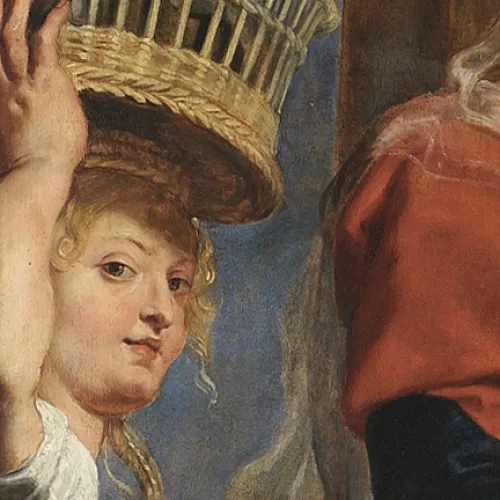

Descent from the Cross
The prosperous arquebusiers guild wanted the centre panel of their altar to depict their patron saint St Christopher. Church authorities didn’t allow that though, because the saint was a character in a legend. The story goes that the giant Reprobus wanted to work for God but did not know where to find him until one day he carried a young boy across a river. Halfway across the river the boy was getting increasingly heavy, nearly causing the giant to lose his balance. After being asked for the reason of being so heavy the child answered: “I am Christ, who has carried the sins of the world upon his shoulders.” The giant had found God and in that instant his name changed. He became Christoforos, Greek for ‘bearer of Christ’. But he was not allowed to adorn the centre panel. Instead Rubens shows how Jesus’ friends remove his dead body from the cross. In that sense they are all bearers of Christ - Christophers.
